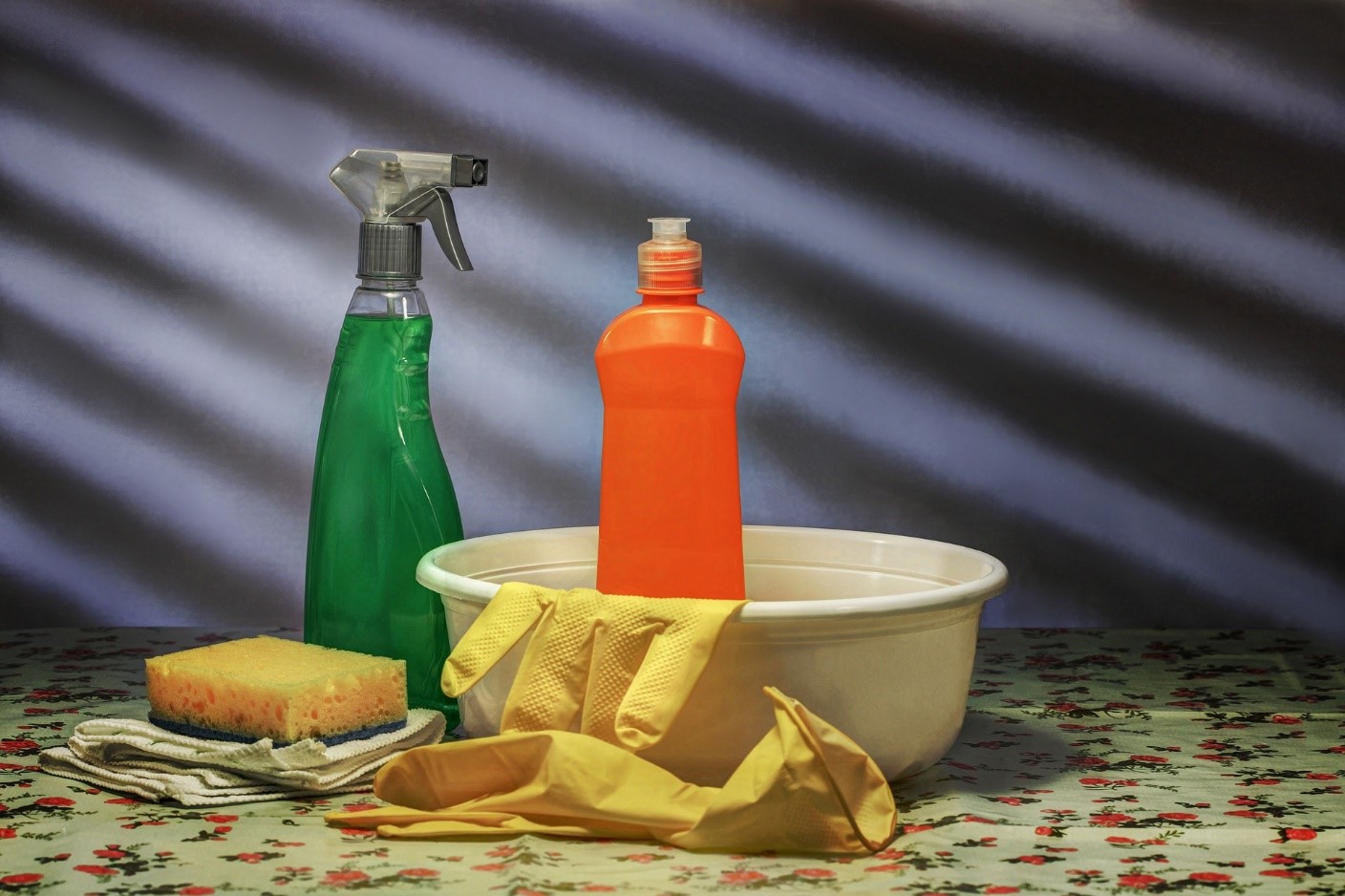 Maths, Physics & Chemistry
Maths, Physics & Chemistry
A House Of Toxins? How Cleaning Products Can Create An Unhealthy Living Environment
Using some common household cleaning products lead to the formation of indoor pollutants. During realistic use, we observed for the first time that chemical vapors from certain cleaning products can rapidly change into small airborne particles harmful to the cardiovascular and respiratory systems. This has consequences for professional cleaners and people frequently exposed to cleaning products.

Most people associate a clean home with good hygiene and will therefore regularly clean their house. Indeed, the use of cleaning products and disinfectants have intensified in recent years, but our new study suggests that this may be doing us more harm than good: a few minutes of mopping indoors using pine- or citrus-scented cleaning products can produce as many potentially harmful particles as from vehicle exhaust along a busy urban street!
Common personal care and household consumer products contain volatile organic compounds, or VOCs. They are commonly added to cleaning products because of their ability to remove oil and grease, in addition to their pleasant scents. These chemicals are not only found in synthetic chemical products—they also occur naturally. For example, limonene is present in the rinds of citrus fruits, while α- and β-pinene are present in pine tree oils. In itself, exposure to VOCs may cause acute effects like eye, skin, or throat irritation and nausea, among other health effects. Furthermore, a certain class of VOCs called monoterpenes, which include limonene, α- and β-pinene, react with ozone in the air to form very small particles that can penetrate deep into the lungs. Once lodged deep in the lungs, these very small particles can irritate cells and cause respiratory problems, or worse, introduce foreign material into the bloodstream, leading to health problems such as cardiovascular diseases.
While previous studies have found that cleaning products can generate particles from their reaction with ozone, our study is the first to reveal, in real-time, how vapors from cleaning products transform into particles when reacting with ozone during realistic indoor cleaning conditions. In addition, we showed that this level of indoor particle pollution, and more importantly ultrafine particles (i.e., very small, nanometer-sized), is comparable to outdoor combustion from vehicle exhaust, raising serious health concerns.
The chemical reactions that we have seen in this mopping simulation are not new—these reactions have been known to occur naturally outdoors when trees emit monoterpenes. These monoterpenes react with ozone to produce aerosols contributing to smog and particle pollution. However, outdoors, this happens over longer time scales (for example, over the course of a day). Knowing that this chemical reaction can happen outdoors, we brought this knowledge into the indoors, and we used different instruments to track the chemical reactions in real-time, starting from the moment the vapor is released up until the particles are formed and grown. Interestingly, we found that these chemical reactions need less ozone indoors than outdoors (where ozone levels are usually about ten times higher) and still happen much faster than outdoors when the “recommended” amount of cleaning product is used!
Our work is particularly important for professional cleaners, custodians, and people who frequently clean, as they may be exposed to elevated particle concentrations even during brief cleaning periods indoors. Getting familiarized with the potential harm of products that we use can help influence regulation and change our behaviors. For example, regulations can be based not only on the potential harm caused by the primary emissions (vapors) from the cleaning products but should also consider the particles that form from the interaction with other common components in the indoor air, like ozone. As such regulations do not yet exist, we can prevent our personal exposure by taking precautions such as increasing ventilation, wearing a protective mask while cleaning, choosing the time to clean when outdoor ozone is low, or searching for a cleaning product that does not contain monoterpenes. As we continue to live through the pandemic and spend more time indoors, indoor air quality scientists continue to explore and understand the microenvironment that we spend about 90% of our lives in.
Original Article:
Rosales, C. et al. Chemistry and human exposure implications of secondary organic aerosol production from indoor terpene ozonolysis. Science Advances 8, (2022)Next read: Sensorimotor wandering: leading spontaneously early human development by Hoshinori Kanazawa
Edited by:
Dr. Rik Voorhaar , Senior Scientific Editor
We thought you might like
Emergent division of labor among clonal ants
Mar 11, 2019 in Evolution & Behaviour | 4 min read by Yuko Ulrich , Daniel J. C. Kronauer , Christopher K. TokitaToo hot to stay cool: dangerously accelerating glaciers’ melt in New Zealand
Feb 24, 2021 in Earth & Space | 3.5 min read by Jonathan L. Carrivick , Jenna L. SutherlandA mysterious object in our Galaxy pulses every 76 seconds
Aug 9, 2023 in Earth & Space | 3 min read by Manisha CalebMore droughts, more war?
Dec 14, 2020 in Earth & Space | 3.5 min read by Michèle Müller-Itten , Marc MüllerMore from Maths, Physics & Chemistry
Testing gravity through the distortion of time
Sep 20, 2024 in Maths, Physics & Chemistry | 3 min read by Sveva CastelloStacking molecular chips in multiple dimensions
Aug 30, 2024 in Maths, Physics & Chemistry | 3 min read by Lucía Gallego , Romain Jamagne , Michel RickhausReversible Anticoagulants: Inspired by Nature, Designed for Safety
Jun 12, 2024 in Maths, Physics & Chemistry | 4 min read by Millicent Dockerill , Nicolas WinssingerDistance-preserving moves always keep a point fixed
May 18, 2024 in Maths, Physics & Chemistry | 4 min read by Shaula FiorelliA resonance triggers chemical reactions between the coldest molecules
Apr 5, 2024 in Maths, Physics & Chemistry | 3 min read by Juliana Park , Wonyl ChoiEditor's picks
Trending now
Popular topics


